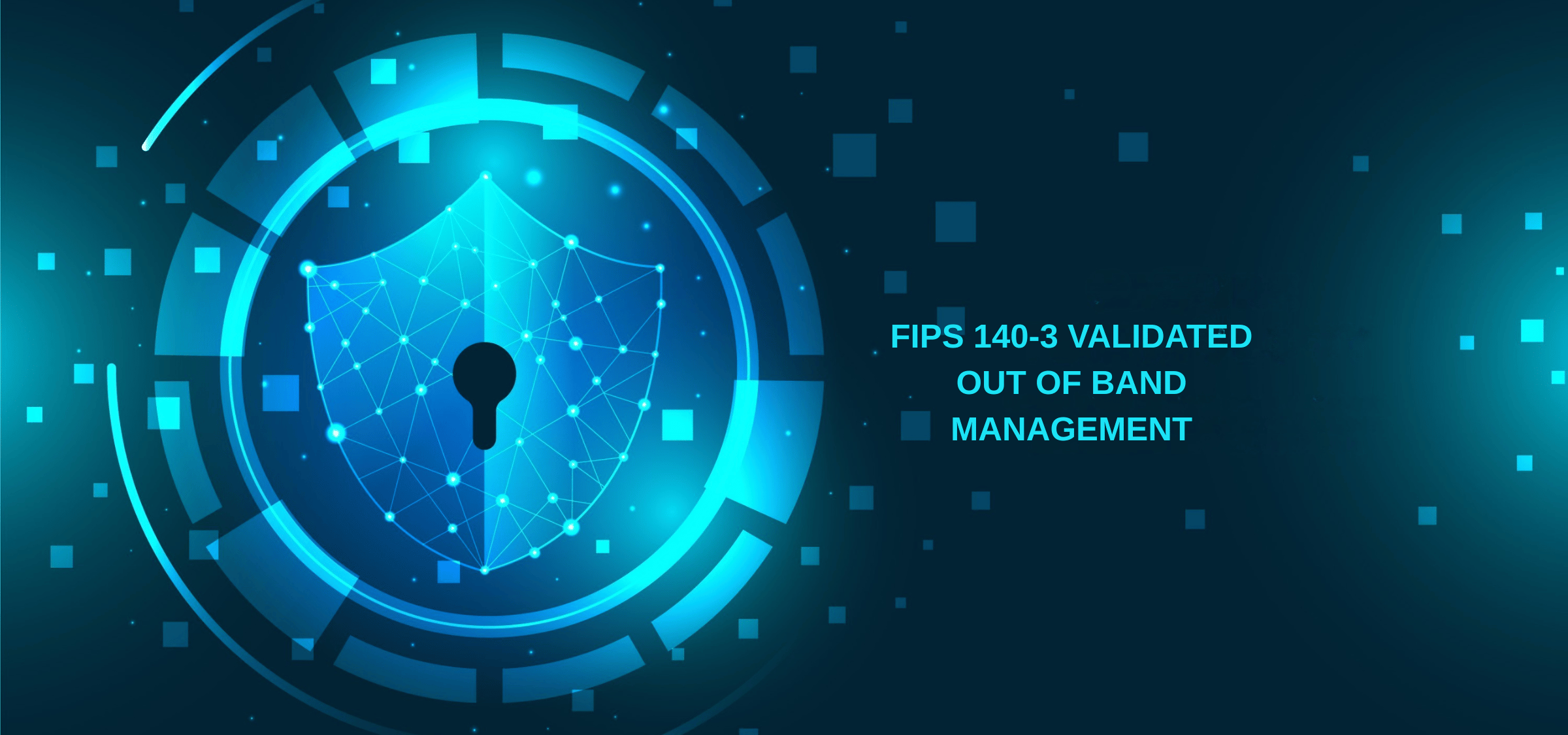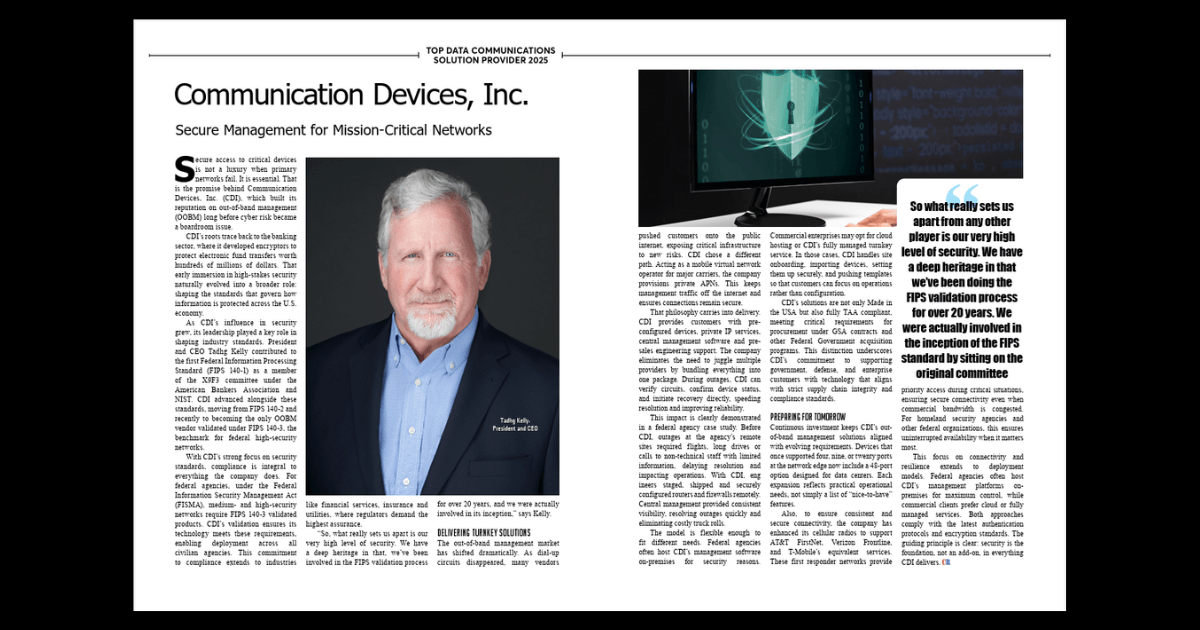From "Castle and Moat" to Zero Trust: Why FIPS 140-3 Validated OOBM is Critical

Adam Cady

From "Castle and Moat" to Zero Trust: Why FIPS 140-3 Validated OOBM is Critical
For decades, cybersecurity relied on a perimeter-based model often compared to a castle and moat. Firewalls and intrusion prevention systems were deployed at the edge, and once a user or device was "inside," they were trusted by default.
But modern threats have shattered this assumption. With cloud migration, remote work, mobile devices, and advanced persistent threats (APTs), the perimeter has all but disappeared. Attackers no longer need to batter the walls; they exploit stolen credentials, vulnerable devices, or insecure management planes to move laterally across networks.
This reality gave rise to Zero Trust — a framework built on one uncompromising principle: never trust, always verify.
What is Zero Trust?
Zero Trust is more than just a buzzword. It's a comprehensive security model that assumes no user, device, or application should be trusted automatically — even if they are already inside the network. Instead, every request for access must be continuously authenticated, authorized, and encrypted.
Put simply: Zero Trust treats every network interaction as potentially hostile.
Core Principles of Zero Trust
At the heart of Zero Trust are three guiding principles:
1. Verify Explicitly
Every connection must be authenticated and authorized based on multiple data points: user identity, location, device posture, workload type, and even time of day. Strong authentication methods, such as multi-factor authentication (MFA) or CAC/PIV cards in federal environments, ensure that only verified identities gain access.
2. Enforce Least Privilege Access
Zero Trust operates on the idea that no one should have more access than they need. Users, devices, and applications are granted just enough access, for just enough time, and nothing more. This minimizes the potential blast radius if credentials are compromised.
3. Assume Breach
Zero Trust starts with the assumption that attackers are already inside. Networks and systems must be designed for containment and resilience, with microsegmentation, continuous monitoring, and rapid response baked into the architecture.
Key Components of Zero Trust Architecture
Building a Zero Trust ecosystem requires multiple layers working in harmony:
- Identity & Access Management (IAM): Strong, adaptive authentication verifies every user before granting access.
- Device Security: Devices must meet compliance checks — patched, uncompromised, and running active security tools — before connecting.
- Network Segmentation: Microsegmentation prevents lateral movement and ensures attackers can't pivot from one compromised device to critical assets.
- Continuous Monitoring: Security doesn't end at login. Logs, analytics, and machine learning monitor ongoing behavior for anomalies.
- Encryption Everywhere: Data is encrypted both at rest and in transit, ensuring that even intercepted traffic is unreadable.
Why Zero Trust Matters Today
Several factors have accelerated Zero Trust adoption:
Remote Work & Cloud Adoption
The rise of hybrid and remote work has dissolved the traditional perimeter. Cloud-first strategies require security that travels with users and devices, not just firewalls.
Advanced Persistent Threats (APTs)
Nation-state actors — including well-documented Chinese and Russian groups — are targeting routers, firewalls, and network management interfaces. Perimeter defenses alone are not enough.
Federal Compliance Mandates
U.S. agencies are under direct orders to move toward Zero Trust. Key directives include:
- OMB M-22-09 Federal Zero Trust Strategy
- CISA Zero Trust Maturity Model
- The DoD Zero Trust Strategy
Together, these mandates make Zero Trust not optional, but a compliance requirement for federal networks and contractors.
Benefits of Zero Trust
Organizations implementing Zero Trust gain tangible advantages:
- Reduced Attack Surface: Every access request is verified, minimizing open doors for attackers.
- Protection Against Insider Threats: Even trusted employees can't bypass security controls.
- Regulatory Compliance: Aligns with NIST, FedRAMP, and CISA requirements.
- Improved Visibility: Detailed logs reveal exactly who accessed what, when, and how.
- Damage Limitation: Even if credentials are stolen, attackers can't move unchecked through the network.
Out-of-Band Management in the Zero Trust Era
While most Zero Trust conversations focus on production traffic, a critical blind spot often remains: Out-of-Band Management (OOBM).
OOBM devices provide direct access to routers, switches, firewalls, and servers when the production network is down or compromised. That makes them the crown jewels of any infrastructure. If attackers compromise OOBM, they bypass production defenses entirely.
This is why Zero Trust must extend to the management plane. Every serial console login, every power cycle command, and every configuration session must be:
- Authenticated with strong identity controls
- Encrypted end-to-end
- Logged and auditable
Without this, Zero Trust collapses at its weakest link.
The CDI Difference: FIPS 140-3 Validated OOBM
This is where Communication Devices, Inc. (CDI) stands apart. CDI is the only vendor delivering FIPS 140-3 Validated Out-of-Band Management solutions — a foundational requirement for Zero Trust in federal and critical infrastructure environments.
End-to-End FIPS 140-3 Validation
Competitors advertise "FIPS-compliant modules." But let's be clear:
- A compliant crypto chip ≠ a validated system.
- FIPS 140-3 Validation requires the entire system — firmware, cryptographic implementation, and processes — to undergo rigorous NIST review.
- Without validation, attackers can exploit untested gaps in encryption and key management.
CDI devices have achieved full NIST FIPS 140-3 Validation, ensuring cryptography is not just present, but proven secure.
Encrypted Console Access
With CDI, every OOBM session is encrypted and auditable. Access to routers, switches, and firewalls is shielded from interception or tampering.
Alignment with CISA Zero Trust Maturity Model
CDI solutions directly support the CISA Zero Trust pillars, ensuring that OOBM is not a back door, but an integrated part of the Zero Trust architecture.
Resilient, U.S.-Made Security
Designed and manufactured in the United States, CDI provides secure supply chain assurance, further aligning with federal procurement standards and executive orders.
Why Validation Matters in Today's Threat Landscape
Chinese state-sponsored hacking groups have been caught targeting U.S. backbone providers and network infrastructure. These campaigns often focus on management interfaces — the very pathways OOBM protects.
If your OOBM platform is not FIPS 140-3 Validated, you may be leaving a hidden vulnerability. A compliant chip alone won't stop an adversary capable of exploiting firmware flaws, session hijacking, or weak encryption modes.
Zero Trust requires validation, not marketing claims.
Zero Trust in Practice with CDI
Here's how CDI strengthens each Zero Trust principle:
- Verify Explicitly: CAC/PIV authentication ensures every login is tied to a verified identity.
- Least Privilege: Role-based access enforces granular control over who can access which console ports.
- Assume Breach: End-to-end logging and encryption mean that even if attackers gain a foothold, OOBM cannot be leveraged as a blind spot.
Conclusion: Zero Trust Requires FIPS 140-3 Validated OOBM
Zero Trust is no longer optional — it is the mandated future of federal and critical infrastructure security. But Zero Trust is only as strong as its weakest link. If Out-of-Band Management is not protected by validated encryption, adversaries will exploit it.
CDI is the only OOBM provider delivering fully FIPS 140-3 Validated solutions, ensuring that your management plane is as secure as your production network.
When compliance, resilience, and trust are non-negotiable, CDI is the clear choice.
Related Tags
Zero TrustFIPS 140-3CybersecurityFederal ComplianceNetwork SecurityCISAAPT Defense Government Security Critical Infrastructure, EncryptionOut-of-Band ManagementOOBMShare this article
Related Content
United States Office
- 85 Fulton Street Boonton, NJ 07005
- +1 973-334-1980
- +1 973-334-0545
- info@commdevices.com
© 2023 Communication Devices, Inc.







